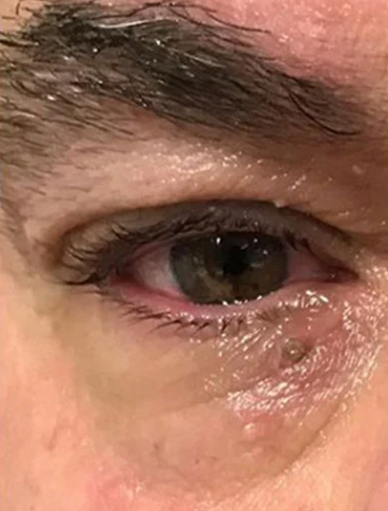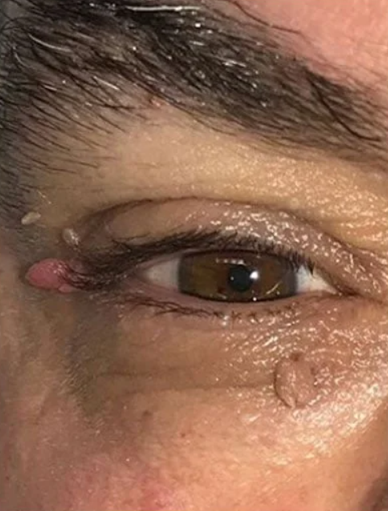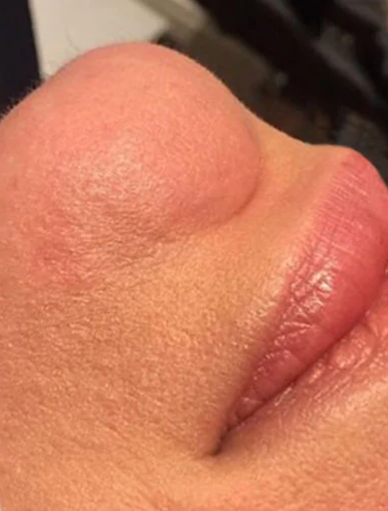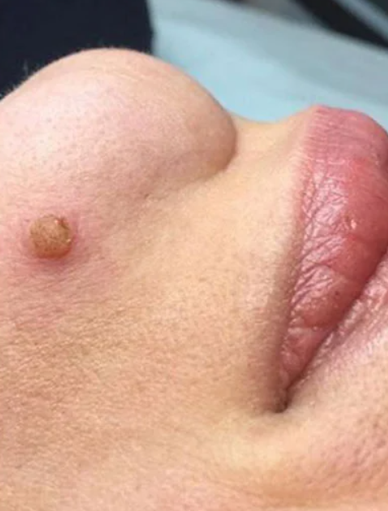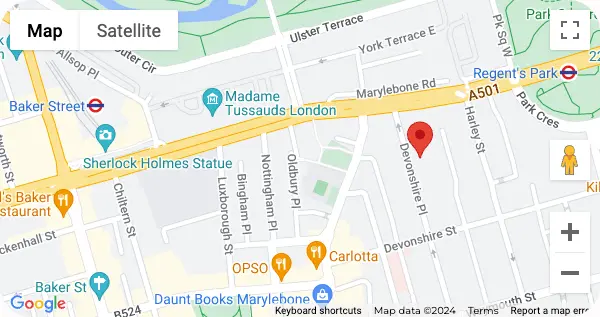Quick Summary
| Healing Stage | What Happens | Care Tips |
| Day 0–1 (Right After Treatment) |
|
|
| Days 2–7 (First Week) |
|
|
| Days 8–14 (Second Week) |
|
|
| Weeks 3–4 (One Month) |
|
|
| Months 1–12 (Long-Term Healing) |
|
|
Introduction
Shave mole removal is a common procedure offered in many clinics in the UK. Many people have done it for different reasons like cosmetic or medical reasons. The treatment is quick and simple, but some worry about what it is like after the removal, how the skin heals, what the wound would look like, and its recovery.
This guide will explain the healing stages and will show you how the skin and wound looks; and what is normal about the recovery process so you will know what to expect and how to take care of your skin to get the best results.
For more insight, you can read: Top 5 Mole Removal Methods: Safe & Effective Options.
What is Shave Mole Removal?
Shave mole removal is a quick procedure used to remove raised moles. By using a surgical blade, a dermatologist carefully shaves off the mole down to the skin’s surface. The area is applied with local anaesthetic so you would not feel any pain and the procedure usually only takes a few minutes to perform.
Unlike other methods like excision, which is designed to cut deeper into the skin and requires stitches, shave removal only treats the top layers of the skin. This leaves a flat wound that heals naturally without any stitches.
When is it used?
- To remove harmless moles that are bothersome in appearance.
- To remove moles that catch on jewellery, razors, or clothing.
- For shallow skin lesions that do not need deeper surgery.
- Sometimes as part of a biopsy to check the mole for diagnostic purposes.
This form of removal method works well for non-cancerous moles that do not go deep into the skin and is usually very well tolerated.
How It Differs from Other Methods
- Excision method: It removes the mole more deeply, so there is less chance of regrowth, but it usually leaves a scar.
- Laser removal method: It works well for flat or pigmented moles but causes a slight bleeding. It is also not suitable for moles requiring histological check. See our full mole removal guide.
- Shave removal: Does not need stitches and heals faster, but with higher risk of mole regrowth.
Benefits of the Shave Method
Shave removal method is usually chosen by patients because it is simple and gentle on the skin. Some benefits include:
- Minimally invasive
- No stitches needed
- Quick wound healing
- Lower risk of scarring
Compared with excision method, shave removal often leaves a smaller scar. Still, results vary depending on skin type, the aftercare and the mole location.
Healing Timeline Overview
The skin goes through stages of healing after the shave mole removal:
| Stage | Timeframe | What Happens |
| Immediate | Day 0–1 | Small amount of bleeding, then clot forms. Dressing is applied to protect the area. |
| Early | Days 2–7 | A scab forms. Redness, mild tenderness, and slight itching are normal. |
| Middle | Days 8–14 | Scab loosens naturally. New pink skin becomes visible underneath. |
| Late | Weeks 3–4 | A light scar begins forming. Sensitivity in the area reduces. |
| Maturation | Months 1–12 | The scar slowly flattens, fades, and blends with surrounding skin. |
Most wounds heal within 3 to 4 weeks, but the scar will keep improving for up to a year.
Healing Stages Explained
| Stage and Timeframe | Appearance | Feel | Care | What Happens |
| Immediate (0–1 days) | Small open wound, may bleed a little | Tender, sore once numbness fades | Keep covered with a clean dressing, clean gently if advised | Clotting begins, body forms barrier |
| Early (2–7 days) | Scab forms, redness and swelling lessen | Mild itching or tightness | Change dressing daily, avoid soaking, don’t pick scab | Darker or raised look is usually normal |
| Middle (8–14 days) | Scab thins, edges lift, pink new skin shows | Less pain, some itching | Clean gently, keep skin moisturised | Fresh skin replaces scab |
| Late (3–4 weeks) | Scab falls off, pink scar appears | Tingling or sensitivity as nerves heal | Massage scar gently, moisturise, use SPF 30+ | Nerves recover, scar starts forming |
| Maturation (1–12 months) | Scar fades closer to skin tone, sometimes barely visible | Usually no discomfort | Use silicone gels if raised, protect from sun | Scar smooths and blends with skin |
How Technique Affects Healing
Doctors choose the method based on both apperance and medical safety.
Shave removal:
- Heals faster, about 3 to 4 weeks
- Usually leaves a flat mark
- There is a higher risk of mole regrowth
Excision removal:
- Takes longer to heal
- Leaves a scar due to stitches
- Lower chancce og mole regrowth
Laser removal:
- Heals quickly with minimal wounds.
- Works best for surface-level moles.
- Not an option for moles requiring biopsy.
Effective & professional doctor-led Mole Removal at our central London clinic
Verified Before & After
Verified Before & After
Early‑Stage Healing Pictures
Looking at healing photos can help you know ehat is normal, but remember that every one heals differently.
- Day 2-3: A red scab or dark crust forms
- Day 4-5: Scab will feel harder and edges may still be red
- Day 6-7: Scab start sto thin and loosen
These changes are usually normal and not a reason to worry. Some clinics like Harley Street Skin Clinic share healing photos for reassurance of each patients.
Pro tip: Always check with your clinic if unsure. Do not always rely on photos posted online.
Mole Removal Wound Care
Basic steps
- Wash wound with mild soap or saline if advised.
- Use a dressing for the first few days.
- Moisturise the skin after the scab falls off to help repair faster.
- Always apply SPF 30+.
For more details, check our guide: 5 Essential Dos & Don’ts for Mole Removal Aftercare.
Do’s and Don’ts
Do:
- Change dressings daily.
- Pat dry after washing.
- Use gentle, fragrance-free moisturiser..
Don’t:
- Do not pick or scratch the scab.
- Do not soak in baths, pool, or hot tubs during the first week.
- Do not expose your skin in excessive sunlight.
When to See a Doctor
Consult your doctor if you notice:
- Redness or heat spreading around the wound
- Yellow or green discharge
- Persistent pain
- Fever or feeling unwell
- Wound reopens.
If you experience any of these, book a dermatologist consultation or contact your GP.
Full Timeline Images & Variations
- Days 1-7: A dark scab forms with some redness aroud it.
- Days 8-14: The scab starts to fall off, showing pink skin.
- Weeks 3-4: A small pink scar appears.
- Months 1-3: The scar softens and its colour begins to fade.
- Months 6-12: The scar becomes flatter and blends better with the skin.
It is normal for the skin to look lighter or darker at first. Most of the time, the colour evens out as the sac matures.
Common Concerns: Scars, Regrowth & Pigmentation
Scarring
Most scars are small, flat and fade over time.
- Hypertonic scars: Raised, firm scars but often improve with massage or silicone gel.
- Keloid scars: It grows beyond the wound area, more common in darker skin.
Skin colour changes
- New skin may look lighter or darker at first
- Use sunscreen to help prevent long-term pigmentation.
Mole Regrowth
- Sometimes the mole comes back if the root was not fully removed.
- If it grows again or looks unusual, see a dermatologist.
Conclusion & Next Steps
Shave mole removal is a safe and simple treatment with quick recovery. <ost people heal in 3 to 4 weeks, and the scar usually fades over the next few months to a year.
Keep the wound clean, protect it from the sun, and watch for any unusual changes to help your skin heal well and reduce the risk of scarring.
If you want mole removal or need help with scar care, our team at Harley Street Skin Clinic can guide you. We also offer options like laser mole removal, scar treatments, and personalised skin care plans
FAQs
- How long does healing take?
The wound usually heals in about 4 weeks, but the scar can take up to 12 months to fully fade
- Will there be a scar?
Yes most people get a small, flat scar. How it looks depend on your skin type, healing process, and aftercare.
- How do I care for the wound?
Keep it clean, apply a gentle moisturiser when advised and avoid sun, scratching, or picking at the scab.
- What are the signs of infection?
Watch out for redness spreading around the wound, pus or yellow fluid, pain that gets worse, and swelling or fever.
- Can the mole grow back?
There is a risk, if some cells remain under the skin the mole can return. For complete removal, excision may be a better choice.
Reserve a mole removal appointment
One of our experts will be more than happy to answer any questions you have.
Book AppointmentJade Dunn
★★★★★
Really helpful and attentive thank you
13th November 2025
Candace Dannenbaum
★★★★★
Super knowledgeable and lovely space
14th November 2025
Maria Callaway
★★★★★
Lesley gave me great advice and was very friendly - the Clinic is lovely and welcoming too.
12th November 2025




